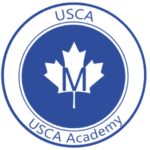[et_pb_section fb_built=”1″ admin_label=”section” _builder_version=”4.16″ global_colors_info=”{}”][et_pb_row admin_label=”row” _builder_version=”4.16″ background_size=”initial” background_position=”top_left” background_repeat=”repeat” global_colors_info=”{}”][et_pb_column type=”4_4″ _builder_version=”4.16″ custom_padding=”|||” global_colors_info=”{}” custom_padding__hover=”|||”][et_pb_text admin_label=”Text” _builder_version=”4.16″ background_size=”initial” background_position=”top_left” background_repeat=”repeat” hover_enabled=”0″ global_colors_info=”{}” sticky_enabled=”0″]
The choice of a program and college
Canada Study: The education system in Canada is devolved into several provinces and territories.
Schools and the education system can be found here.
- International students can use EduCanada to learn more about studying in Canada, including how much it will cost and other relevant information.
- Information about the school system in each province and territory is provided by the ministries and departments responsible for education.
Schools in the primary and secondary phases of education
Canada Study: Primary and secondary schools educate pupils between the ages of six and eighteen. The terms “primary” and “secondary” typically refer to the first eight or ninth grades.
International students are welcome to attend any Canadian elementary or secondary school.
When it comes to studying in Canada, minors are subject to additional restrictions.
Schooling after high school
Colleges, universities, private career colleges, and vocational and technical schools are all examples of post-secondary institutions.
There are specific requirements for applying to each post-secondary institution, such as what level of English or French you must have.
To learn more about higher education options, visit the following websites:
- Universities Canada — profiles of Canadian universities, a comprehensive database of study programs, and assistance in planning a higher education
- Canadian Information Centre for International Credentials – information on how to have your previous education evaluated against Canadian criteria by the Canadian Information Centre for International Credentials
- Learn more about trade and vocational schools at the National Association of Career Colleges (NACC).
Language Schools
As second languages French and English are taught in many Canadian schools. Contact Languages Canada for additional information on private language programs.
Learning French as a foreign language
There are numerous options for learning French in Canada.
Canada’s French-language schools and institutions are listed on the country’s French-language education website.
AUFC provides information on university programs offered in French, English, or both languages.
Specialized educational establishments
Canada Study: Schools that accept international students must be approved (or “designated”) by the provinces and territories in which they are located. Defined learning institutions (DLIs) are what we call these establishments (DLI).
A letter of approval from a DLI is required if you need a study permit. They will not accept your application if it does not meet these requirements.
There are no DLI schools in Canada’s elementary and secondary schools. Post-secondary institutions, such as universities and language schools, can be found on a list.
Applying to an institution or college
Choosing a school, college, or university is the first step in applying. Every school has its application process.
At least six months in advance you must submit your application if you plan to attend elementary or secondary school and a year in advance if you plan to participate in a university or other post-secondary institution.
To find out how to apply to the school of your choice, contact them directly. A list of the documents you need to submit is provided. You can learn about the following things from your school: the application fee, tuition, health insurance, rent, and the cost of living in Canada.
You can apply to the schools of your choice by filling out application forms when it comes time to send them in and follow their directions.
If the institution accepts you as a student, an acceptance letter will be sent to you. To be eligible to apply for a student visa, you’ll need this letter.
Insurance for health care
The Canadian government does not cover the medical expenses of international students.
Health insurance for international students varies by location. For more information about health insurance, speak with the admissions office at the school you’re applying for.
You can Read Also:
Study in Canada: A Complete Guide for International Students
How To Strengthen Your OUAC Application?
Why is OUAC the Best Platform for Undergraduate Students?
[/et_pb_text][/et_pb_column][/et_pb_row][/et_pb_section]

